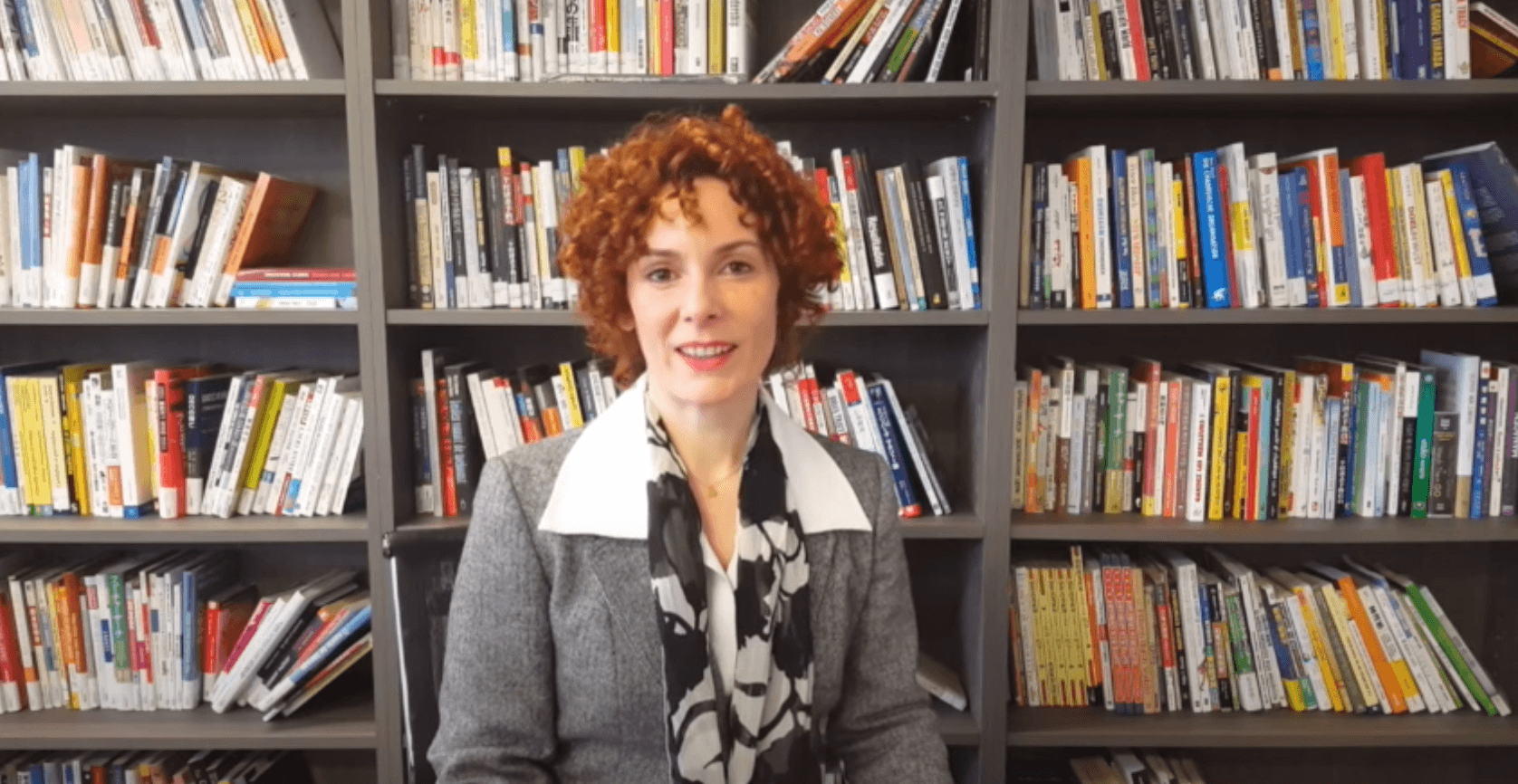SC Moatti’s mind, body, and spirit framework for building excellent products

Meet SC Moatti. She’s written an award-winning bestseller on how to build great products and founded Products That Count, one of the largest networks of product managers in the world. On top of that, she’s spent over a dozen years building products at Facebook, Nokia and Electronic Arts and a decade investing as a venture capitalist.
With a resume like that, there’s no denying that SC understands products and the mindset it takes to build excellent ones — and it’s not what most people think.
The fallacy of product/market fit
SC rejects the conventional wisdom that finding product/market fit is the end of the product journey. The story goes something like this: you build something, find a few people who like it, and then trade building for incremental growth.
“That couldn’t be more wrong,” SC explains. “There’s no single product/market fit — it’s more like 50 shades of product/market fit. One customer will request a feature, you’ll build it, and another will get upset, leading you to change your product again. It’s easy to get caught in the sway and lose sight of your big-picture product vision.”
There’s no single product/market fit — it’s more like 50 shades of product/market fit.
To create a great product, SC suggests building your product vision around the idea that technology is an extension of ourselves instead of something that lives separate from us. “You have to think about who people aspire to be and use that to create a framework that informs product decisions,” she advised.
To build great products, shape your vision around the idea that technology is an extension of ourselves instead of something that lives separate from us.
A mind, body, spirit framework for building great products
SC thinks about people and products into three dimensions:
- The mind targets our need to grow and learn. A great product needs to grow as we do.
- The body is all about our search for beauty. Great products achieve beauty by balancing design and functionality.
- The spirit speaks to our desire to find meaning and purpose. Technology feels meaningful when it’s personalized.
These three facets work together to make or break a product. When they’re balanced and well-executed, the product achieves excellence — just like a person.

Spirit: Make products meaningful with personalization
Think about the last time you thought you were in love. Your beloved likely felt like they were made for you, like they just got you, to the point that they could read your mind.
“Our phones and smartwatches are like that,” SC said. “They create an incredible opportunity for products that feel personalized and we find meaning through that connection.”
Before the mobile age, businesses could glean basic information about users (age, gender, etc), but nothing substantial enough for a product to give someone the feeling of being understood.
Now, our social media accounts auto-tag our friends’ pictures and our media apps tell us what songs and movies we’ll like. It’s almost like technology can read our minds. For product managers, the question has changed from “Can we personalize this experience?” to “Where should we draw the line on personalization?”
For product managers, the question has changed from “Can we personalize this experience?” to “Where should we draw the line on personalization?”
But why limit it at all?
“If you ask for too many permissions too soon, you’ll send off privacy alarm bells. If you don’t ask for enough, the user experience will suffer,” SC said.
She recommends that product managers start by ranking permissions on a scale of must-have to nice-to-have. “Prioritize the things you need to know to make your product relevant. Don’t let people download your GPS app without access to their location, but don’t ask for access to their address book until they want to share their location with a friend.”
Ranking permissions this way helps you balance the consumer’s concerns about data and privacy against their desire for a meaningful experience.
“We don’t want to admit it, but we like when businesses give us a service for free or serve us ads for things we want. The most important thing is just to be transparent and let users make their own decisions about what they share.”
Once you’ve figured out the user information you need to make your product meaningful, you can work on making it beautiful.
Body: Balance design and functionality to build beautiful products
Think about the last time you saw something truly beautiful — a person, a thing, or a place. What feature or aspect made it so awe-inspiring?
“Everyone can experience beauty,” SC said, “but describing it is tricky.”
When searching for the qualities that define beauty, SC found two schools of thought — the artistic, which speaks to product design, and the rational, which speaks to product efficiency. Both need to be taken into consideration to achieve greatness.
The rationals rely on concepts like the Golden Mean and Birkhoff’s ergodic theorem. Their key tenet? Beauty is about efficiency: creating order out of chaos.
“When you’re thinking about beauty from a rational perspective, what you’re actually thinking about is turning dizzying amounts of information into something simple and actionable,” SC said. “In that sense, a beautiful product is one that is super efficient, so much so it can become invisible.”
SC advises product managers to test for this with what she calls the “thumb test”. If a user can complete a task with one finger, whether that’s on a phone, watch or even a computer, then they are completing the task efficiently and the product is achieving its functional goal.
Functionality allows you to get things done, but as followers of the artistic camp say, true beauty is found in the emotional experience. When Airbnb switched their “Add to Wishlist” button from a star to a heart, they turned a conscious, rational decision into a visceral, emotional one.
“It’s like when I’m trying to tell my mom what I do for a living,” SC said. “She’s not from Silicon Valley, so oftentimes her response is more of an, Uh hunh, ok. But then sometimes I say something and she just gets it—her reaction goes to, Oh that’s really cool! If you’re going to build a great product, you need a user experience that elicits that ‘I-just-get-it,’ ‘that’s-so-cool’ reaction in your users.”
Sometimes getting to that reaction takes time, and that’s not always a bad thing, especially when it makes our products feel more human.
Mind: Create products that grow as we do
Think about how humans grow. It’s not a linear process. If you’re practicing a new skill, you’ll likely get a teeny bit better every day, until one day, you wake up and bam — you’re amazing.
“That’s how great products need to grow,” SC said. “Sometimes it’s incremental and sometimes it’s disruptive.”
WhatsApp grew that way. They made incremental changes to their read receipts, eventually landing on a checkmark system. Then, they had a moment of disruptive growth when they decided to encrypt all their messages. That one change moved them into an entirely new market—they were no longer just a consumer messaging platform but a B2B service with built-in security features.
“One of the challenges of being a product manager is figuring out the ideal ratio of disruptive to incremental growth,” SC said. “There’s a balancing act between driving the product toward greatness and keeping an eye on profits. It’s not that sexy-sounding, but that’s your job: making money for the company.”
SC suggests using a product equation to keep your product goals and business goals balanced and aligned.

Using a product equation to stay ROI-positive
A product equation consists of three main metrics that grow revenue: number of customers, number of transactions per customer, and revenue per transaction.
“You know you need to create value for the business, but you also want to build a great product,” SC says. “By building features that move the needle on a single revenue metric, you can do both.”
The goal here is focus. Create a strategy that changes a single metric. Want to increase the number of customers? Center your product roadmap on features that drive acquisition. Interested in increasing the number of transactions per customer? Only look at product feedback which drives engagement.
“When you choose just one metric to focus on, there’ll be casualties on the other ones, but that’s why you keep rotating,” says SC. “Did you grow your customer base with an acquisition strategy? Switch to an engagement strategy. Did the number of customers suffer a bit? Switch back to acquisition.”
Doing this, you’ll continue to grow your user base and product until you’ve achieved greatness. The only thing left to do then?
“Make it even greater,” laughs SC.
. . .
productboard is a product management system that enables teams to get the right products to market faster. Built on top of the Product Excellence framework, productboard serves as the dedicated system of record for product managers and aligns everyone on the right features to build next. Access a 15-day free trial of productboard today.




![The CPO’s Blueprint for Annual Planning: An Opportunity to Drive Change [Part 3]](https://www.productboard.com/wp-content/uploads/2024/11/strategy-blueprint-560x293.png)
